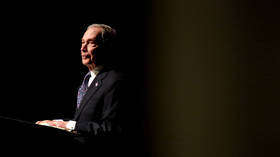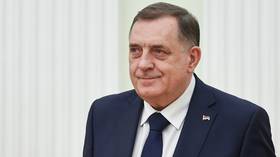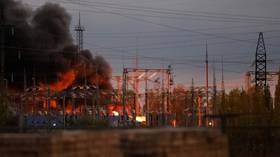Last Normandie-Niemen hero: 'Going to Russia was almost a must for me'
A World War II ace, count Roland de la Poype, who recently died at the age of 92, was the last foreign Hero of the Soviet Union who fought in the Normandie-Niemen group. He was one of the first volunteers in the legendary regiment.
As soon as the war started on the Western Front in 1939, 19 year-old de la Poype, who came from a family of French aristocrats, enrolled in pilot school. But despite earning his license within a year, he never got the chance to defend his own skies as in June 1940 France surrendered to Hitler's army. He escaped to England to join Charles De Gaulle’s Free French Air Force, and subsequently to equatorial Africa, which was not under German control.“I couldn’t accept that France bowed down without a fight,” he told RT in an interview in 2010.When, at de Gaulle’s suggestion the pilots were offered a chance to volunteer on the Eastern front, he jumped at it.“We had a debt to the Russians who came to help us in 1914 to 1917. And I knew it. I knew it so well that going to Russia for me was almost a must. So, when I was asked at the headquarters of General de Gaulle’s Free French Forces if I would go to Russia with a squadron, I said 'Of course, right away!'” said de la Poype.Despite being the youngest of a group of 14 French pilots and stationed in a land he’d never visited- in the epicenter of the most brutal theater of war in the entire conflict- de la Poype rushed into action.“If some of us were to die – we were pilots, we were warriors – we were made for it. We asked for a hard life and we got it,” he remembered.He was assigned a Yak-1B, a fast but flimsy aircraft, equipped with an often-faulty radio, which unlike a Russian pilot, he asked to be customized with the gaping mouth of a shark. His sorties often disintegrated into low-flying dogfights, with enemy Messerschmitts sneaking up from behind, forcing de la Poype to become a master of banking maneuvers. “In Russia I completed almost 200 missions against enemy planes but I wasn’t overly worried, because I knew by heart how to do what the Brits call 'evasive action', or tricks to get out of a nasty situation. I still have a scar on my leg, but I never let there be a chance a bullet could pierce my heart.”He became a mainstay of the squadron, and later regiment of Normandie-Niemen, a force renowned for its aerial prowess and being one of only two Western aerial units to fight alongside the Soviets on the Eastern front (the other was RAF’s No. 151 Wing). By the end of the war, Neu-Neu, as it was affectionately known among the pilots, shot down at least 273 enemy planes, while losing 87. More than forty of its pilots lost their lives.Other than for an injured leg, and a ruptured eardrum, de la Poype managed to remain unscathed through the conflict and was promoted to Captain and awarded Hero of the Soviet Union, the highest honor given for personal military bravery. Only three other Neu-Neu pilots received the same award. By the end of the war, de la Poype had scored 7 solo and 9 team victories in aerial combat against the enemy.Roland de la Poype quit Neu-Neu in 1947, and unlike many who were forever irreparably damaged by the war, began a second life that brought him immense wealth and recognition.An inventor of plastic consumer goods (like France’s first single-use shampoo bottle) he built a large factory, founded a scientific center Marineland in Antibes, which would grow into one of the biggest marine zoos in Europe, and even personally designed a Citroen off-roader.In the 1980s, he retired to the countryside, spending his time playing golf on his own course.















